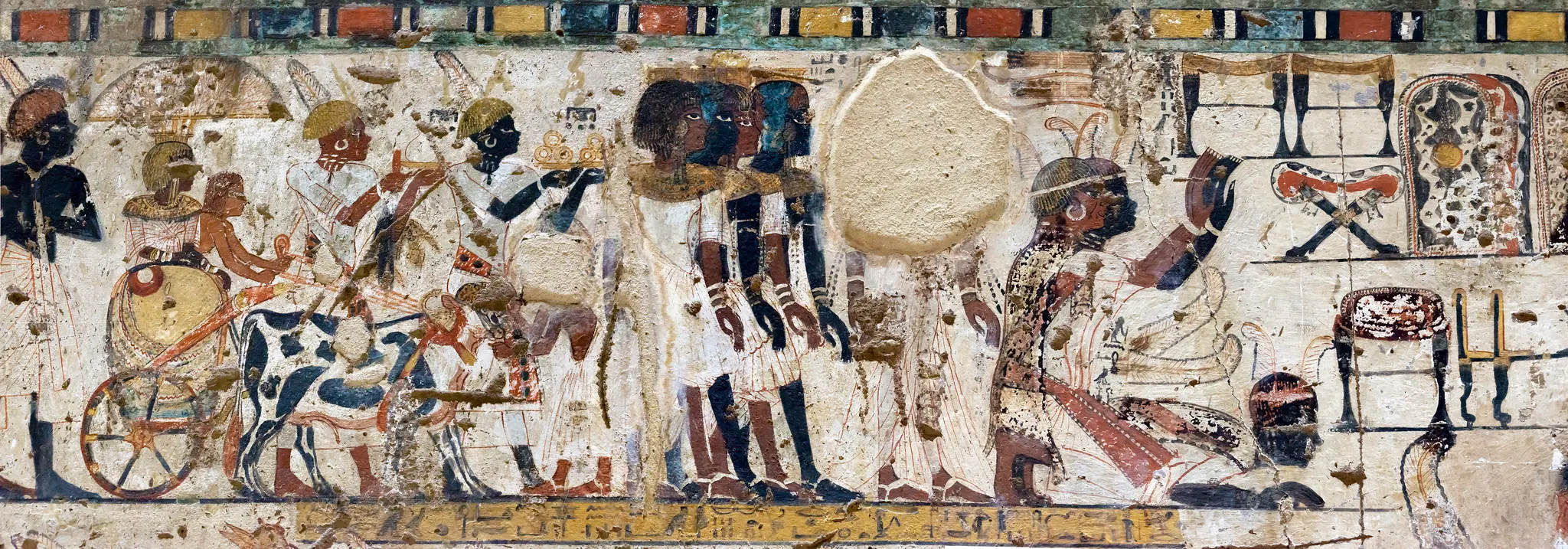Nubian fusion of Egyptian symbols
Nubian fusion of Egyptian symbols
Symbolism in the Near East the Eastern Mediterranean and Africa mainly in the civilizations of Persia Greece Rome and Mesopotamia. The first period in which we find the echoes of Egypt is the continuation of the ancient Egyptians interest in their past. The "revival" of earlier forms and expressions in Egyptian art and inscriptions during this first wave of the Egyptian Revival. Egyptian motifs and ideas may appear both in the form of untrained borrowing to some extent reflecting the expansion of the cycle and in the form of direct and learned transmission of the original meaning behind the artistic and architectural images.
The imagination of the ancient Nile Valley is inseparable from the recorded monuments that survive from antiquity to the Renaissance and even today. The colossal size of the Great Pyramid of Giza. The Greek of the 5th century Herodotus considered the Great Pyramid to be the tomb of the pharaoh Khufu now known to have ruled around 2589–2566 BC. Cycles of Egyptian Revival in Art Architecture Literature and Other Forms of Cultural Expression To the south of Egypt is the territory of Nubia now southern Egypt and northern Sudan.
Nubia was a colony of Egypt for a long time. and gained independence in the first millennium BCE and ruled Egypt from 747 to 656 BCE as the 25th Dynasty between 300 BCE and 350 BCE. The powerful kingdom centered at Meroei, about 120 miles 190 kilometers northeast of Khartoum used Egyptian styles combined with indigenous Nubian symbols. Meroeitic priests continued to worship Egyptian gods. Ancient Egyptian monuments reflect paintings that were painted eight hundred years earlier, as part of the decoration of the tomb of the vizier Thutmosis III Rekhmir around 1450 BCE. Rather than blindly copying earlier works of art Montuemhat's bas-reliefs embraced diversity combining scenes with a unique blend of symbolism and artistic style.
showing West Asiatic tribute bearers tomb of Sobekhotep 18th Dynasty Thebes / Upper Egypt 18th Dynasty 1400 BC
(circa) British Museum / Treasures of ancient Egypt
Nubian rulers adopted and adapted Egyptian symbols such as the uraeus cobra often incorporating them into their royal decorations and symbols.Similarly Egyptian artistic motifs such as the lion the symbol of the pharaoh sometimes appeared alongside Nubian figures reflecting the complex relationship between the two cultures. Although Nubian culture was distinctive it was also closely connected to ancient Egypt resulting in an interesting blend of symbols and artistic styles from each culture.
Nubian rulers,especially during their reigns in Egypt They built temples in Egypt and adopted Egyptian temple architecture.This motif is common in early Ramses art depicting an Egyptian lion subduing a Nubian effigy emphasizing the power between the two cultures.Nubia and Egypt had a long history of trade with goods such as gold ivory ebony and incense being exchanged. Through their interactions Nubian and Egyptian cultures influenced each other resulting in a wide variety of shared symbols artistic styles and religious beliefs.
Nubian artistic motifs incorporated Egyptian motifs such as the tortoise beetle the lotus and animal symbols Nubian and Egyptian gods were often combined in religious rituals. For example the Egyptian goddess Hathor was also worshipped in Nubia and the Nubian goddess Isis was associated with motherhood and healing. Nubian kings especially those of the 25th Dynasty also known as the Kushite or Nubian dynasty adopted Egyptian symbols such as the uraeus cobra and the double crown a combination of the white crown of Upper Egypt and the red crown of Lower Egypt.











